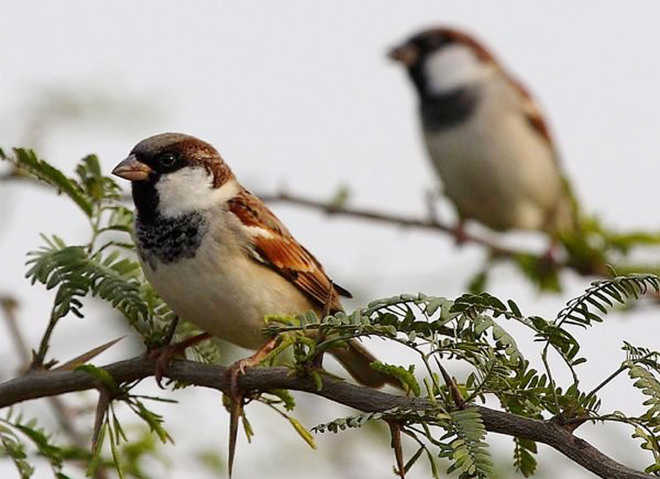Manmeet Singh Gill
Tribune News Service
Amritsar, March 19
In the last two decades or so, the number of common bird species — house sparrow — has decreased to such an extent that it sighting has become a rarity, especially in the vastly urbanised areas. Its name ‘house sparrow’ is a testimony to the fact that the bird has cohabited with human beings in their homes and nested in the spaces besides wooden logs which were a common technique of making houses until recently.
On the occasion of the World Sparrow Day, senior citizens and bird lovers share their views that how we have lost a chirping neighbourhood. A senior citizen, Kewal Singh, said, “In those days, there were no cemented roofs, nor any mash doors to keep birds away.”
Another elderly, Satwant Kaur, said, “There presence at times was a nuisance around three decades ago, especially if you were trying for an afternoon nap in summers. Chirping by dozens of them was like an alarm bell for the late risers. This is what I miss nowadays.”
The World Sparrow Day has offered time to people to ponder it over and make amends. Setting up bird feeders in house gardens and parks, or atleast keeping a bowl of fresh water and throwing some bread crumbs can help in attracting avian guests, residents say.
Zoology Prof Dr Anish Dua from Guru Nanak Dev University (GNDU) says, “There are four reasons for the disappearance of a particular species. These are habitat alterations, over exploitation, pollution and competition. In case of house sparrows, over exploitation (hunting) and competition (from another species) do not seem plausible.”
“The extensive agriculture in the state after 50s has led to clearing of vast tracts of land from shrubs which were a common habitat for sparrows. Even the number traditional trees which were home to these birds have also gone down,” said Dr Dua, adding that different schools of researchers also believed that pollution, including of electromagnetic radiations and indiscriminate usage of poisonous chemicals on cereals, too, could be a reason.
Unlock Exclusive Insights with The Tribune Premium
Take your experience further with Premium access.
Thought-provoking Opinions, Expert Analysis, In-depth Insights and other Member Only Benefits
Already a Member? Sign In Now










